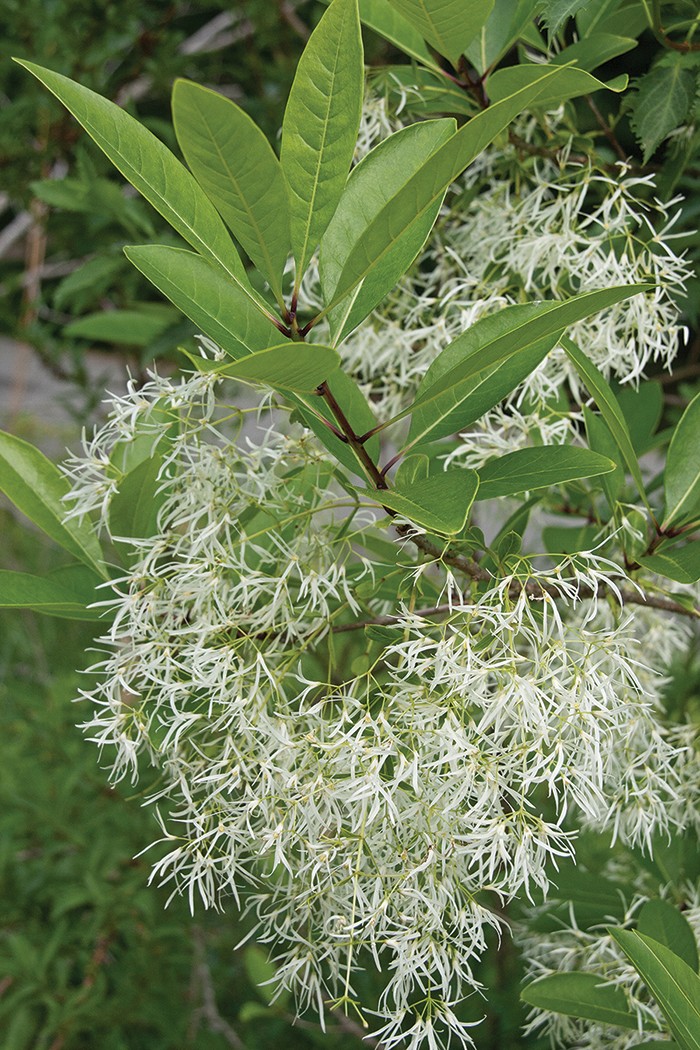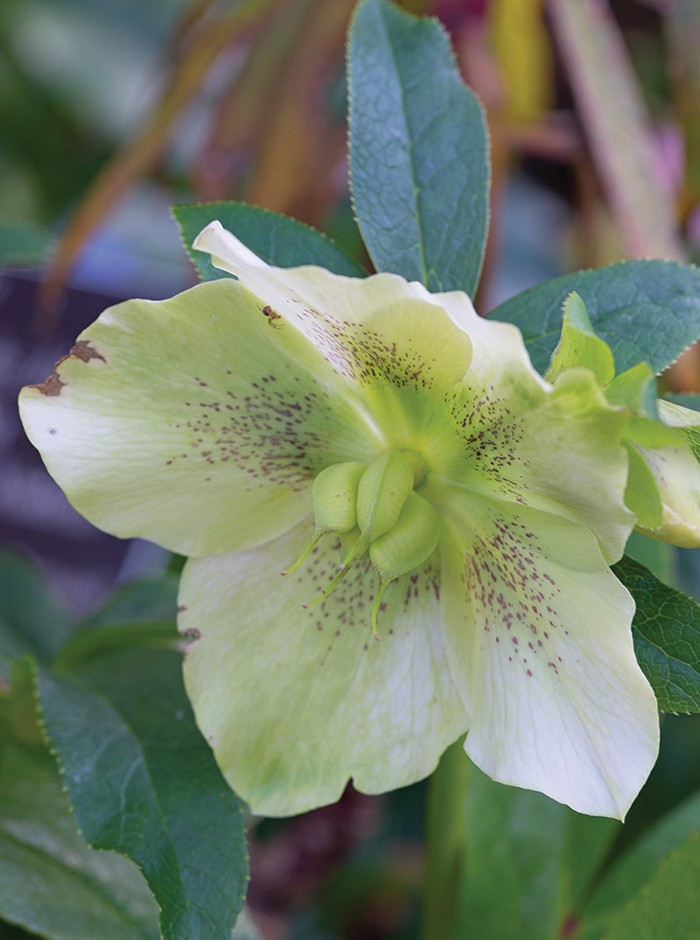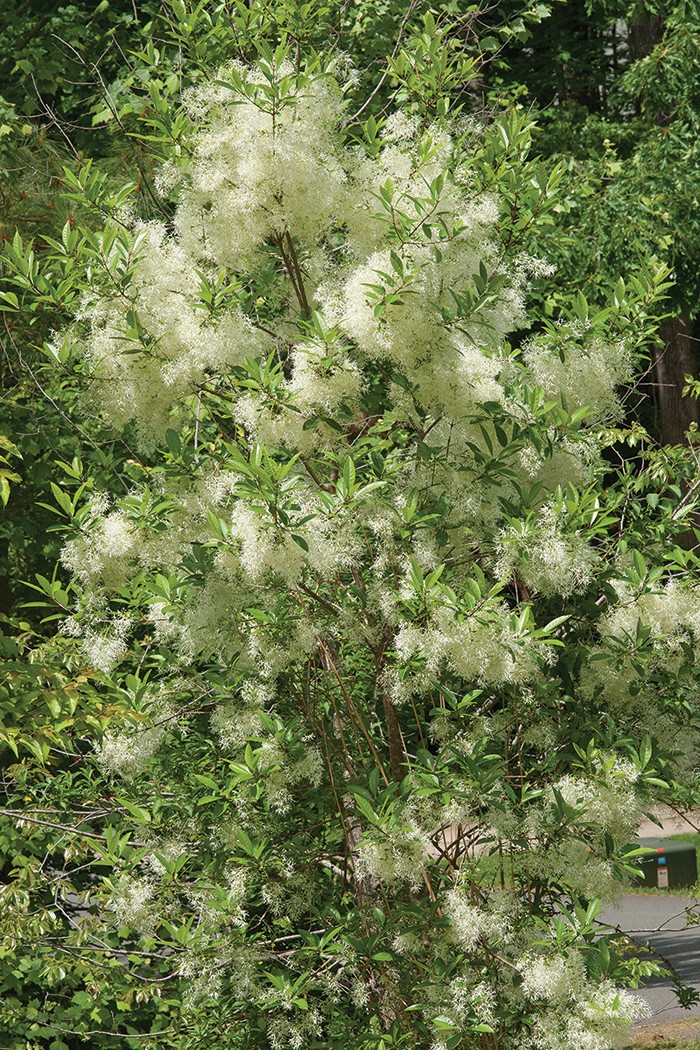Like any garden adventurer, I occasionally grow odd plants from the fringe, but actually, I have gardened with the fringe for years. Let me explain. Many moons ago, on a whim, I bought a small fringe tree at the Farmers Market in Raleigh, and even after, I’ll admit, I haphazardly planted it in the first spot I found in my landscape. It has proven to be not only pretty, but also pretty dependable.

Fringe Tree Bloom
The fringe tree (Chionanthus virginicus) is a native woody that calls the eastern U.S. forests home, so I shouldn’t have been surprised by its toughness. More than just a survivor in the wild, it is also a survivor of the slop — fringe trees find river bottoms, lowlands and savannas much to their liking.
This indigenous pretty is deciduous and usually has a rounded shape formed by semi-open branches that eventually stretch 12 to 20 feet tall and about as wide. Fringe tree is also dioecious, with female plants producing small, olive-shaped, bluish drupes eagerly enjoyed by birds in the early fall.
Fringe tree is alternately called “old man’s beard,” and the reason for both names becomes pleasantly apparent in the spring. Just as new, vibrant green leaves begin to appear, large fluffs of white, spritely blooms form, enveloping the tree in a feathery, fragrant cloud. This show for the nose and eyes usually starts in mid to late April and lasts about two weeks.
The Chinese fringe tree (Chionanthus retusus) is another option that can occasionally be found locally. A similar-sized eastern Asia import, it tends to display smaller bloom clusters. Wait! Smaller bloom clusters? Sorry, that swings my preference needle to the shaggier “Made in America” fringe tree, but you decide for your garden.
In the woods, our native fringe tree is typically found in moist environments, but for cultivated landscapes, it will do well in just about any location if it is mulched and watered regularly. While this ornamental can be planted in partially shaded spots, its flower power will have more oomph in constant sun. And being rarely bothered by pollution, it makes an ideal addition to any city garden.
When its blooms fade away, fringe tree becomes a green glob for the rest of the growing season. Come autumn, however, the leaves brighten to a shimmering yellow, saluting seasonal change. Then, after a leafless winter rest, it will, once again, burst into its springtime bodacious spectacle of blooms, which for me, begins yet another fun year of fringe gardening!

Hellebores
April is the month when hellebores (Helleborus x hydridus) begin transitioning from flowering to forming seeds for future plants. Allowing the seeds to drop to the ground — or spreading them further from the momma plant — and then covering with a thin layer of compost is an easy way to increase the size of your hellebore bed — that is, as long as you remember Rule Number One: Don’t let freshly seeded areas dry out over the summer. Since these new hellebores come from seeds, the flowers of the offspring might not be exact copies of the parent plant, but I’ve found most of mine to still be pretty. Also, seedlings can take about two years to bloom, so don’t try to speed up the natural process by over-fertilizing them into flowering faster.
To Do in the Garden
April
- Proper watering is always crucial for a successful garden, but when can it be too much, or even too little? Invest in a simple rain gauge and an easy-to-use soil moisture meter to help fine-tune your garden’s irrigation needs.
- Although the middle to end of this month is a good time to start such summer edibles as peppers, cucumbers, green beans, squash and tomatoes in the vegetable patch, don’t rush out to plant on the first balmy day with temperatures in the 70s. Warm soil temperature — not warm air temperature — is the key to faster starts from new plants. Since soil is denser, it heats up slower, so waiting until May to plant the bulk of your veggie garden is not a bad option.
- Fancy flower displays from such early season bulbous showoffs as ipheion, hyacinths, daffodils, crocus and species tulips have become a memory now, and about all that is left is uninteresting foliage. The temptation might be great to mow or weed-whack the leaves level with the ground to make way for fresh displays from spring- and summer-blooming plants, but curb this urge. While they are still green, the leaves are absorbing energy from the sun for next year’s floral-fest, so wait until the foliage turns brown, and then, break out the trimmers.
- As bulbs go, bulbs come — late this month is a good time to start planting such summer bulbs as caladiums, dahlias, gladioli and cannas.
- Art of Aging Gracefully
- In the Mix
- A Pocket Full of Parks
- In Healing Color
- Small Business Spotlight: Rush Cycle
- Nonprofit Spotlight: Alliance Medical Ministry
- Remembering Rosenwald
- From the Editor: April 2020
- Green Scene
- Liquid Assets: No’Lasses from Fair Game Beverage Co.
- Liquid Assets: Vitruvius IPA from Craftboro Brewing Depot
- Garden Adventurer: Fringe Gardening







